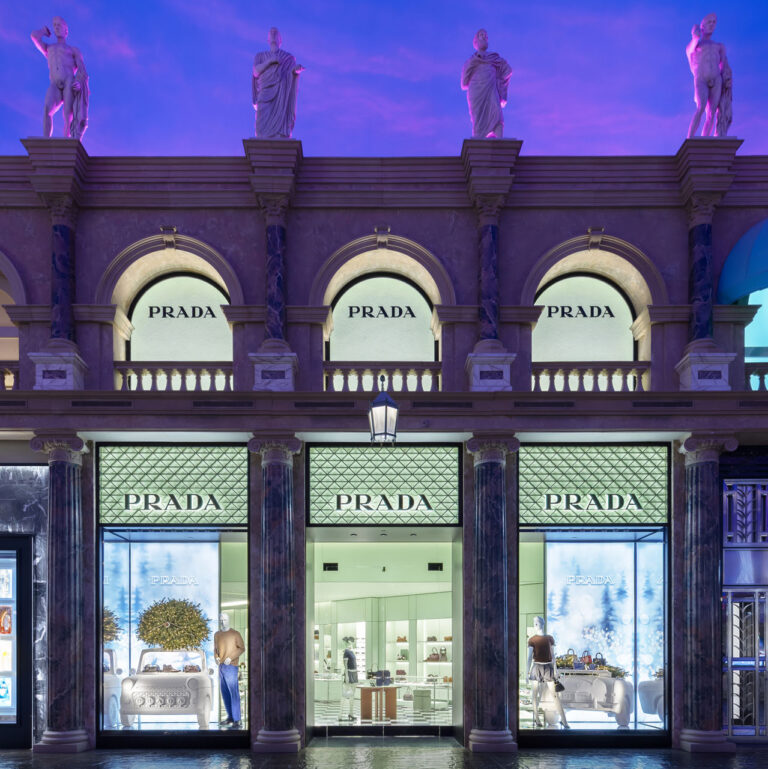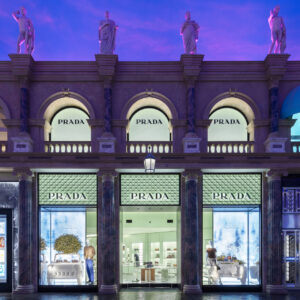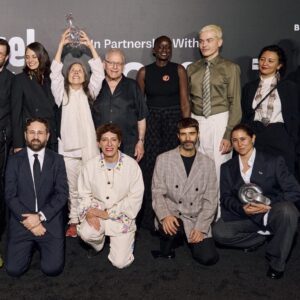
Naiomi Glasses is not a screamer. “I’m usually so reserved,” she says. “If I’m in a group setting, I’m probably the one who’s listening.” On a fateful October afternoon in 2021, however, the seventh-generation Diné weaver shrieked with joy. Ralph Lauren had asked her to be the 56-year-old company’s inaugural artist-in-residence. “I was like, ‘Oh my god, of course, yes!’” she remembers. “At the same time, you kind of think to yourself, How is this happening?”
Fast-forward a little over two years and that disbelief has transformed into 32 garments and accessories, the first of three limited-edition capsules designed by Glasses in collaboration with the brand she grew up wearing. The collection landed in stores last December, accompanied by a campaign that the textile artist began envisioning her very first day on the job. (Today, her story with Ralph Lauren gained a new chapter, with the release of the second collection, Color in Motion, a love letter to another passion of Glasses's: skateboarding.)
“I told everyone at Ralph Lauren, ‘I want everything to be Indigenous. I want people to see the beauty of Indigenous peoples in front of the camera, and to know that we have talents bringing to life such a beautiful campaign behind the scenes too,’” the 26-year-old recalls, referencing the inaugural campaign.
From the photography (by Ryan RedCorn, a screenwriter for Reservation Dogs, and Daryn Sells, who lives 15 miles up the road from Glasses in Navajo Nation) to the music used in the campaign’s Instagram Reels (courtesy of Albuquerque-based indie outfit Side Montero), the campaign is a testament to Glasses’s desire to lift her creative community up alongside her, and her laser-sharp attention to detail.
That intentionality threads its way throughout the collection, and Glasses sees a story behind every decision. She advocated for concha buttons to adorn the capsule’s blouses, an homage to the Diné people’s long silversmithing tradition. (The first concha buttons were hammered from silver dollars.) She made sure the wool wrap, her riff on a wearing blanket, was made with undyed fibers, a glimpse of what this classic garment looked like before it became a staple in trading posts across the United States—and definitely before Ralph Lauren.

Because the storied brand is, in Glasses’s words, “what represents American fashion,” and was inspired by Indigenous iconography for some of its most enduring designs, the collaboration could have been as strained as it was significant. But the artist sees her family in the team she collaborated with, and vice versa.
She references a few Ralph Lauren garments she wore endlessly while growing up, like a striped pink dress and a bright turquoise polo. “All those pieces were in my wardrobe,” she says. “I always saw them, so I was like, ‘Yeah, of course, if I were to ever work in fashion, I would go back to something that reminds me of family.’”










 in your life?
in your life?

